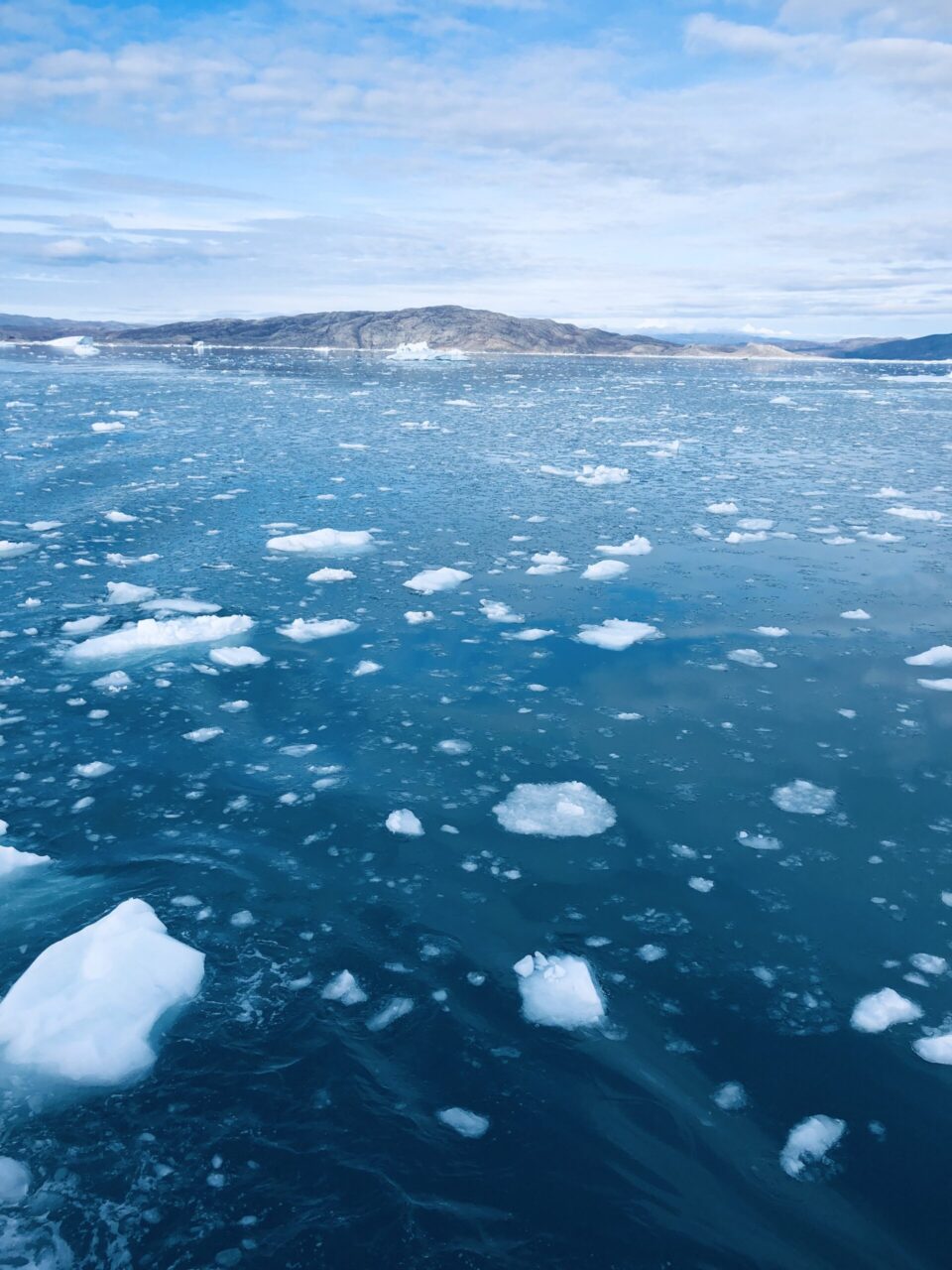The Inuit believe that anyone who goes to these areas just to enjoy the beauty of them is out of their mind because they are putting their life at risk
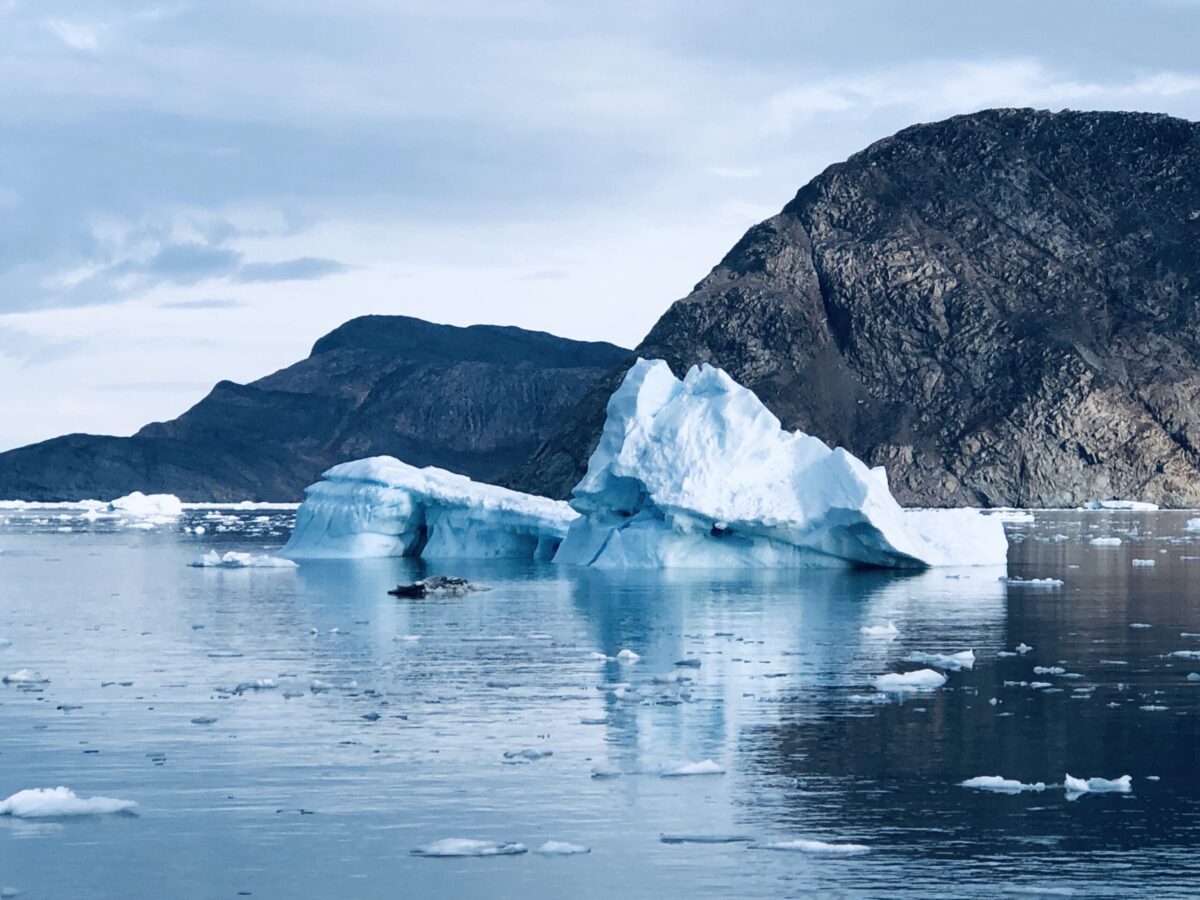 “The most terrible sound that can be heard on the Earth”, is how the Inuit described the breaking of a rock from an ice ridge to me. Brittle comes from the icy depths but seems to be coming from the bowels of the planet. As if the ice is not splitting, but the Earth’s crust itself. Trapped air bubbles have been languishing in the ice for millennia; breaking off and releasing the pressure with a muffled pop. Maybe it’s the sound of an ice soul ripping…
“The most terrible sound that can be heard on the Earth”, is how the Inuit described the breaking of a rock from an ice ridge to me. Brittle comes from the icy depths but seems to be coming from the bowels of the planet. As if the ice is not splitting, but the Earth’s crust itself. Trapped air bubbles have been languishing in the ice for millennia; breaking off and releasing the pressure with a muffled pop. Maybe it’s the sound of an ice soul ripping…
My Inuit friends described the sound to me as “as if the Earth was about to burst in half.” This is how the ice children are separated from their ancient parent.
The frozen rocks have been waiting for who knows how many thousands of years to break free and sail on their way. Scientists claim that the average age of the ice here is at least four thousand years. Separation from the progenitor – the endless expanse of ice – is the beginning of the end. It may be a year, a flicker of time in a long duration, before they become water spilt in the ocean. But they dissolve by taking on wondrous, stunning forms, as if to make their unforgettable contribution to the beauty of the world before they disappear.
The ships look like scrolls that are sometimes visible and sometimes disappear from the horizon, among the rocks that overhang them by at least ten times. Polar bears hunt seals in the distance, and Inuit take tourists to watch their melting treasures.
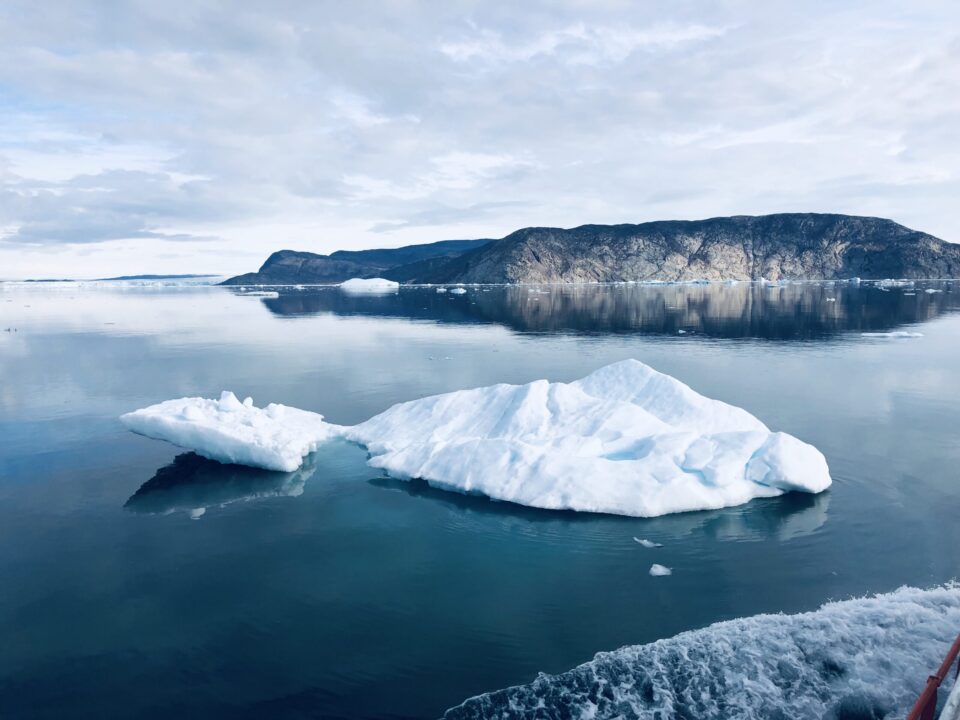 “Only recently have ships reached the Eqi glacier for the first time. The Inuit believe that anyone who goes to these areas just to enjoy the beauty of them is out of their mind because they are putting their life at risk. The ‘living glacier’, as they call it because the rocks are constantly falling off it much more often than from others, is a great danger to ships. Countless videos on the Internet will get your blood pumping,” a scientist tells me.
“Only recently have ships reached the Eqi glacier for the first time. The Inuit believe that anyone who goes to these areas just to enjoy the beauty of them is out of their mind because they are putting their life at risk. The ‘living glacier’, as they call it because the rocks are constantly falling off it much more often than from others, is a great danger to ships. Countless videos on the Internet will get your blood pumping,” a scientist tells me.
As we approach it, the glacier looks like a small bulge in the far open sea. The massive ice cliff is two hundred metres high (our ship is not even fifteen) and almost four and a half kilometres long! When travelling, one quickly and instantaneously realizes how relative everything is.
Next to icebergs, we look like Lilliputians standing in front of Gulliver!
“Imagine a river the width of the Danube. If one part of it froze, stood up the length of its width and then was placed between two peaks of the mountain, it would actually be like this glacier. And the cliff you see is a huge frozen waterfall, from which pieces of ice break off every fifteen minutes and crash into the sea with a great noise,” the scientist tells me.
“Meet Eqi! Squint as much as you can because you will definitely hear the sound”, he makes a gesture with his hand as a sign of introduction.
The ice cliff still appears as a thin whitish line in the distance. The sea is calm, there is not even a breath of wind. As we get closer to the goal, there are more and more rocks of different sizes. We are again amazed by the dimensions: only when we saw another ship next to a distant rock, did we realize that the ice was dozens of times bigger than us. Next to icebergs, we look like Lilliputians standing in front of Gulliver!
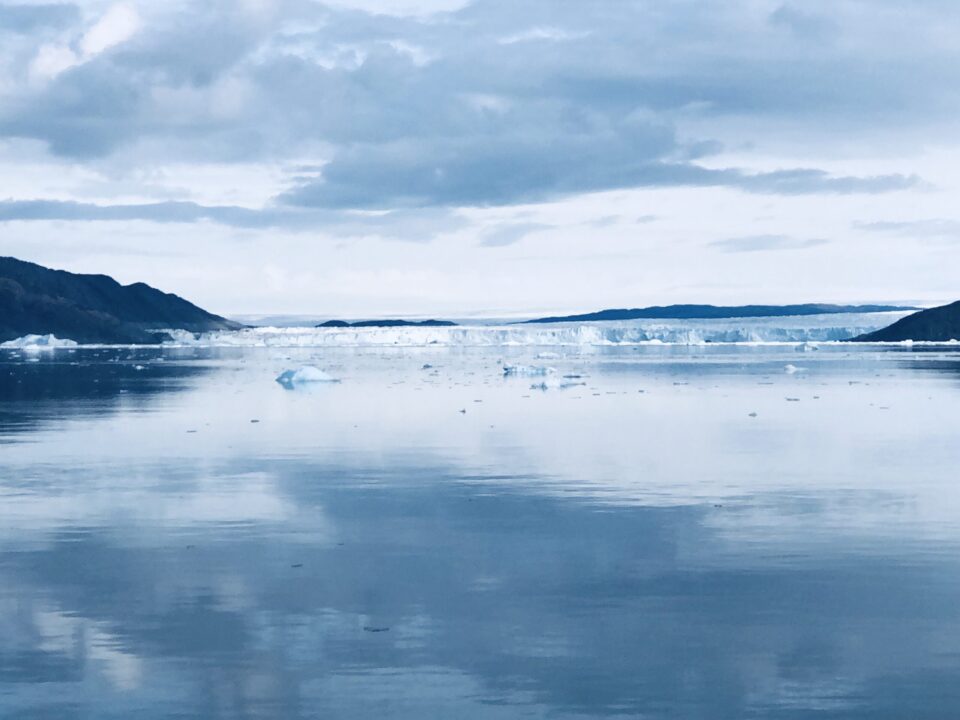 The ocean and the sky are the same piece of folded blue sheet and the folding line is the glacier we are heading towards. Larger pieces of ice hit the ship’s hull. Just as the scientist described before leaving, we enter a sea covered with a multitude of white figures. All the ice seemed to have passed through a giant blender, as if it had been prepared by some clumsy titan, trained cocktail master…
The ocean and the sky are the same piece of folded blue sheet and the folding line is the glacier we are heading towards. Larger pieces of ice hit the ship’s hull. Just as the scientist described before leaving, we enter a sea covered with a multitude of white figures. All the ice seemed to have passed through a giant blender, as if it had been prepared by some clumsy titan, trained cocktail master…
“We are lucky. In a few weeks, the water will change its aggregate state and form a solid cover, and then even much more powerful icebreakers won’t be able to enter here”, the ship’s captain informs us and adds that the temperature is around zero, which means – very warm. “Soon it will be minus twenty degrees.” But the scientist explains to me that even this is an unusually high temperature for this latitude. “Because of the warm Gulf Stream on the other side… If you travel just a few hundred kilometres to the west, to Canada, the weather is at least twice as cold.”
For many, a trip to Greenland is a dream come true and for some, it’s just a whim
We slowly and persistently make our way to the ice cliff, turn sideways to it, and then the captain turns off the ship’s engine, to allow us to hear only the sounds of nature. The glacier is crumbling and its pieces fall into the sea with a bang. The flawlessly flat surface of the sea then rises and transforms into one big wave, which lifts us up and down as it pleases. The sun shines on the front wall of the glacier, so it is bright, but the gloomy clouds play and scatter a multitude of bluish shades on it and the water. It seems that the entire spectrum is reduced to only one colour – blue, but it seems there is an infinite number of shades of blue.
“If we compare Eqi to a skyscraper, it would have thirty floors. It is about twenty metres under the water and the cliff that we see is 180 metres,” the scientist tells me. I notice the cascading structure of the ice, which reminds me of elementary school children when the teacher prepares them for a photo shoot – the shortest kids are in the first row and the tallest are in the last. The cliffs that are closest to us are also the lowest, while much bigger boulders are in the second, third and fifth rows. A lot has already broken off from their tips, so they are sharp like shards of broken glass. There are thousands of tiny spikes on top of Eqi, whose name means “edge” in Inuit.
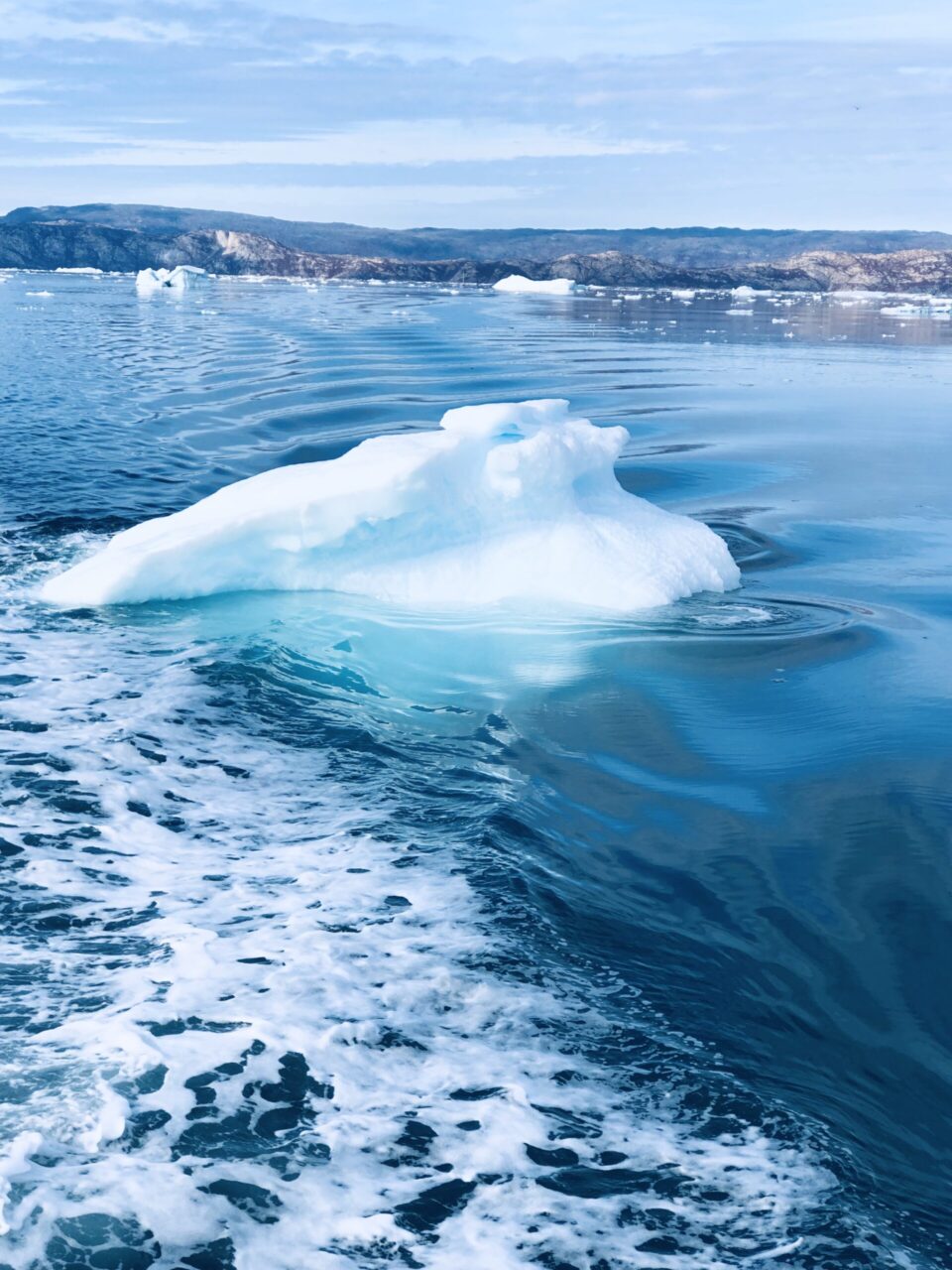
The ship makes its way through the finely crumbled whitish bits, getting increasingly closer to the glacier. I looked behind the stern and there was something to see – we had opened a new, empty fairway! The ice parted where we passed. I expected it to join right after us, but instead, a very long green river formed in the middle of the white sea, which would last at least half an hour until the ice overcame it.
“This is the most dangerous activity for you in Greenland,” my scientist friend informs me at a rather inopportune time. “If an iceberg breaks off, it can cause a real tsunami and turn us into fish food, pureed, forever. We would not be the first or the last to be overturned by such a wave.”
“Have you ever thought about how old the Earth you live on is? How did it come about? The answers are magnificent.”
We tensely watch the long white wall, waiting for it to break. We want to see it, that’s why we came, but we are also afraid of it. If we turn our heads away for a second we could miss the action, while one big iceberg can send us swimming with the whales.
Sound travels more slowly and is heard only a second or two after the piece begins to break off; it often reaches us when all the action is already over and on the surface of the water you can only see the place that swallowed the icy bite. It is not easy to recognize the place in a uniform wall where the breakage occurs. That’s why we help each other and shout as soon as we notice that the ice is starting to crumble. Two hours passed as we were witnessing awe-inspiring scenes. I want to stay here.
“When the pressure prevails, cracks appear that are tens, maybe even hundreds of kilometres long. The formation of icebergs can cause a powerful earthquake, up to five degrees on the Richter scale,” the scientist teaches me.
“Look at the red dots on that crimson-gray hill on the side… Those are huts where you can spend the night. From there you can walk to the glacier or the ice sheet,” my friend tells me. However, we don’t have time for that. The makeshift pier is actually the ship’s destination. Ukrainians and a few more Inuit disembark there. Two tourists who spent the night near the glacier will join us, but first, we all disembarked to dine in a small restaurant.
“We don’t have Internet, talk to each other,” it says on the front door.
Among the few foreigners I met on this trip, each is a world of its own. The grumpy woman from Bermuda with whom I shared a room, adventurers who spent their inheritance to see the Arctic, rich American pensioners who apologized to me for the bombing (of Yugoslavia)… They all complement the landscape, climb the crags, and tell me about themselves and about how they perceive this area. For many, a trip to Greenland is a dream come true and for some, it’s just a whim. We admire and enjoy the beauty of nature, the icy expanse, and the surprises that illuminate. This divine island unites and equalizes us all – we all have to travel on the same ship, spend the night in the same inn, have lunch in the same place and shop in the same store – because other options are hundreds of kilometres away, days of sailing or waiting for a flight. Wealthy people, travellers who gave their last penny to see the ice sheet, explorers, tourists, curious and crazy people of various kinds, although there are not many of us, we are all pushed into each other’s arms. And that kind of experience is another asset that this island gives us.
“Greenland is a giant piece of ice thrown over a green carpet, which corners and fringes engulf the ocean,” the scientist tells me, explaining that no one can predict how the landscape will behave when everything melts.
“The ice sheet over Greenland is actually the largest freshwater sea in the world, only it’s frozen and placed over an undulating landscape. Glaciers are rivers that flow from that sea and they speed up their flow every year. They flow twice as fast today as they did twenty years ago and that is the most worrying. Only recently my colleagues discovered that in the centre of the island, under the eternal ice, there is the longest canyon in the world, about 750 kilometres long. Who knows if that canyon will one day become a huge lake, or maybe it will divide the unique island into several parts? What we found is that the rocks at the bottom are among the oldest on the planet – they were formed three million years ago,” he explains to us the endlessly interesting geology of the northern region.
“Have you ever thought about how old the Earth you live on is? How did it come about? The answers are magnificent.”
He explains to us how entire mountains, by freezing and thawing in the centre of the island, were crushed by huge amounts of ice that moved. They were carried by glaciers, grain by grain, to the ocean, where they became sand at the bottom. The scientist takes out a tablet from his bag and shows us a 3D animation that evokes the researcher’s idea of what the Greenland soil looks like under many hundreds of thousands of tonnes of ice, which has been standing there for at least two to three million years.
 “Look at that detached house on the hill. It is the home of your namesake, Paul-Emile Victor, the famous French explorer, who started his expeditions across the frozen wasteland from there. He claimed that three large islands were hidden under the Greenland ice.”
“Look at that detached house on the hill. It is the home of your namesake, Paul-Emile Victor, the famous French explorer, who started his expeditions across the frozen wasteland from there. He claimed that three large islands were hidden under the Greenland ice.”
“Well, someone had to show the way to Victor, just as you were shown,” says the chef who is bringing us a mini-barbecue, roughly half a kebab for lunch for each of us. His name is Nicolai Koch Christensen and he is the great-grandson of Victor’s guide. “When I got the job here, I didn’t know anything about it. It was all destiny”, he says while serving us coffee in wine glasses, which he set on fire. The bluish flame in the scientist’s glass died down in no time and we could help ourselves to “Greenland coffee”. Noticing my surprise, he immediately explained:
“The local coffee is made by adding whiskey in it, which represents everything that is rough on this island – hunters, fishermen, mountains. Then we add Kahlua1 coffee liqueur to complement the drink with delicate beauty: a symbol of women, animals, nature. Both are mixed during the dark polar nights, epitomized by the blackness of the coffee itself. We cover it with foamy cream, representing- icebergs and glaciers. Then we add Grand Marnier2, which burns in the colours of the aurora borealis. So, in one glass, we serve you the whole of Greenland”, he says as he sets fire to my serving. While I’m enjoying the coffee flame that instantly turned into smoke and the unusual drink, we are joined by a middle-aged Inuit woman who had been sitting at the next table.
“I was born in Ilulissat. Our fjord used to freeze over every year, but that hasn’t happened for some time now,” she says.
“Greenland is changing, and those changes will affect the lives of all creatures on the planet,” my scientist friend asserts as we watch Eqi.
“Look at this glacier… Three kilometres of its surface has melted since 2015 to date. Three kilometres of ice, two hundred meters high”, he animatedly tells us. “That much ice hasn’t retreated in the last five thousand years! About two hundred billion tonnes a year melts off Greenland!” He shows us printed photos of Eqi, showing where the cliff was in 1912, 1929, 1953 and every year since 2011. The changes are enormous: in the last hundred years, the miles and miles we’ve just sailed had been part of an ice wall as tall as a thirty-story building! I look at the pictures, then at the landscape.
“Greenland is changing, and those changes will affect the lives of all creatures on the planet.”
“I can hardly believe my eyes,” I say.
“You can’t argue there is or there isn’t climate change. We feel it here every day. The climate is changing. Summers are warmer. There is less and less ice. I don’t believe my generation will live to see it disappear completely, but my descendants probably will. Life will continue its course, but the world without Greenland, as it is today, will not be the same world”, an Inuit woman, whom I met earlier on the ship, warns. We walk around the deck and bump into each other every ten minutes; we say a few words, and then everyone keeps mum, and walks away spontaneously, staring at the magnificent Eqi glacier, which is waving its tail like the most beautiful blue peacock in front of us.
“The mass of the ice sheet has not increased since 1998. We are witnessing the biggest geological change of the modern age”, begins a short lecture the scientist who specializes in geology. “Five thousand gigatonnes3 of water have melted in Greenland since 1972. That’s enough to fill 16 trillion4 bathtubs. To compare, New York consumes one gigatonne of water annually,” he tries to convey enormous amounts, but he only succeeds in comparing the unimaginable with the unimaginable. “Half of it melted from 2010 to date. At least 22 billion tonnes of ice melts on Earth every day!”
The captain warned us that time was running out by blowing his whistle. We go down the goat trail and the steep staircase to the improvised pier.
“Wonderful beach,” I exclaim without thinking, even though I know that just a few minutes in this water would cause the death of a careless swimmer from hypothermia.
“Oh, well, we call it suicide beach,” an Inuit woman tells me, explaining that if you get tired of life, all you have to do is go to that lovely patch of gravel and wait for a wave to wash over you as sooner or later, the ice will break off Eqi.
The captain hurries us aboard: “The wave takes less than two minutes to get here. If it hits the pier while we’re boarding, we’ll all go underwater.’
We continue sailing through the sea of ice. Around us is an endless white mixture, from which no water can be seen. I imagine we’re floating on a giant bowl of melted white chocolate ice cream.
“If the Earth was flat, this would be its edge,” the scientist tells me, staring at the glacier. We come across an area full of icebergs resembling small clouds: as if the sea is a 3D mirror of the sky, we sail above the clouds and watch them become white in the mass of blue. It’s just that the air cushions of the sky are surprisingly firm and scratch our vessel with a frightening sound.
I heard a terrible sound, but I did not see which part of Eqi broke off. As the weather is gloomy, I ask the scientist whether that was thunder.
“Lightning and lightning only exist in unstable atmospheric conditions. A wave of warm air and a wave of cold air are needed. Everything is cold here, so thunderstorms are rare, maybe once every few years. Unfortunately, recently there have been more and more of them and this is one of the proofs that the climate is changing.”
We sail down the same passage past the glacier to make as many videos and photos as possible. We are all sorry that time is passing quickly and that we have to say goodbye to the magnificent Eqi. We understand why the Inuit consider glaciers to be living beings. Thanks to this visit, it was as if we were all reborn with it. We bonded with Eqi, it became dear to us, although it is still unknown, distant, unique, untamable. Reflecting on its size, I vividly felt how small and miniature I was and that caused relief and comfort to wash over me.
By Viktor Lazić
